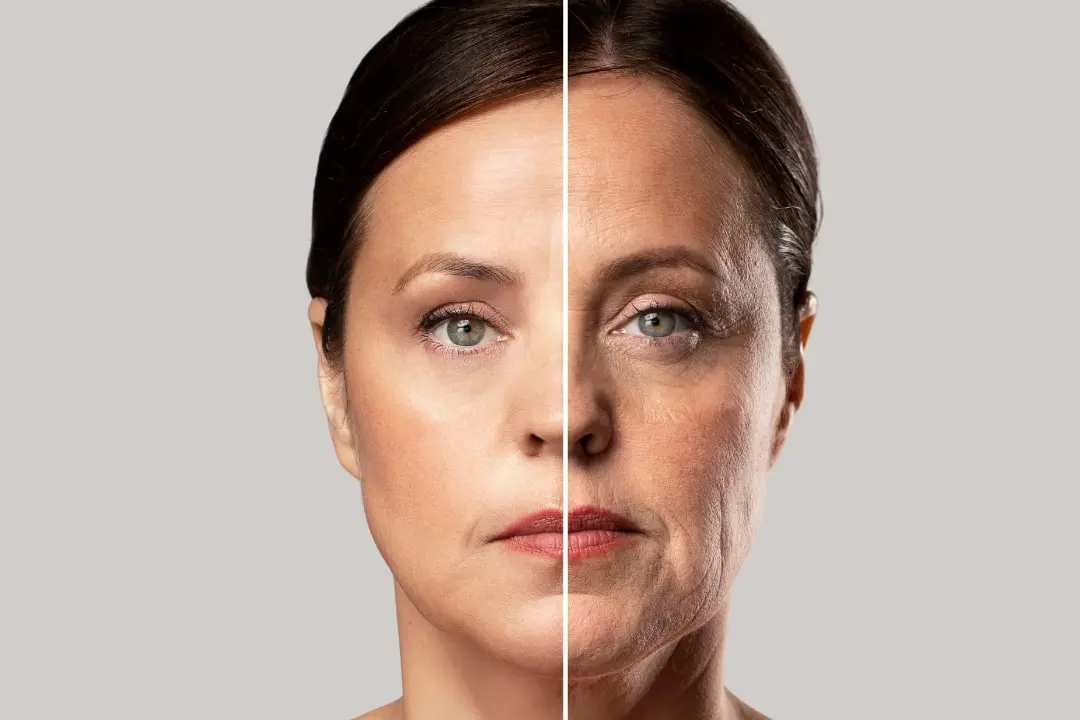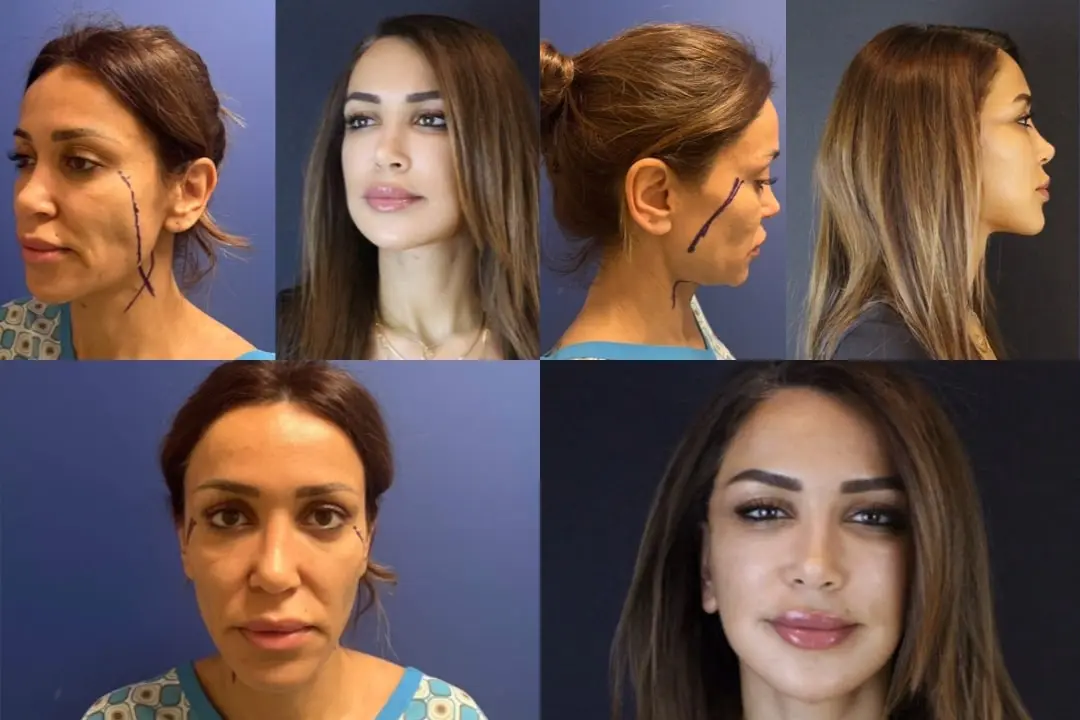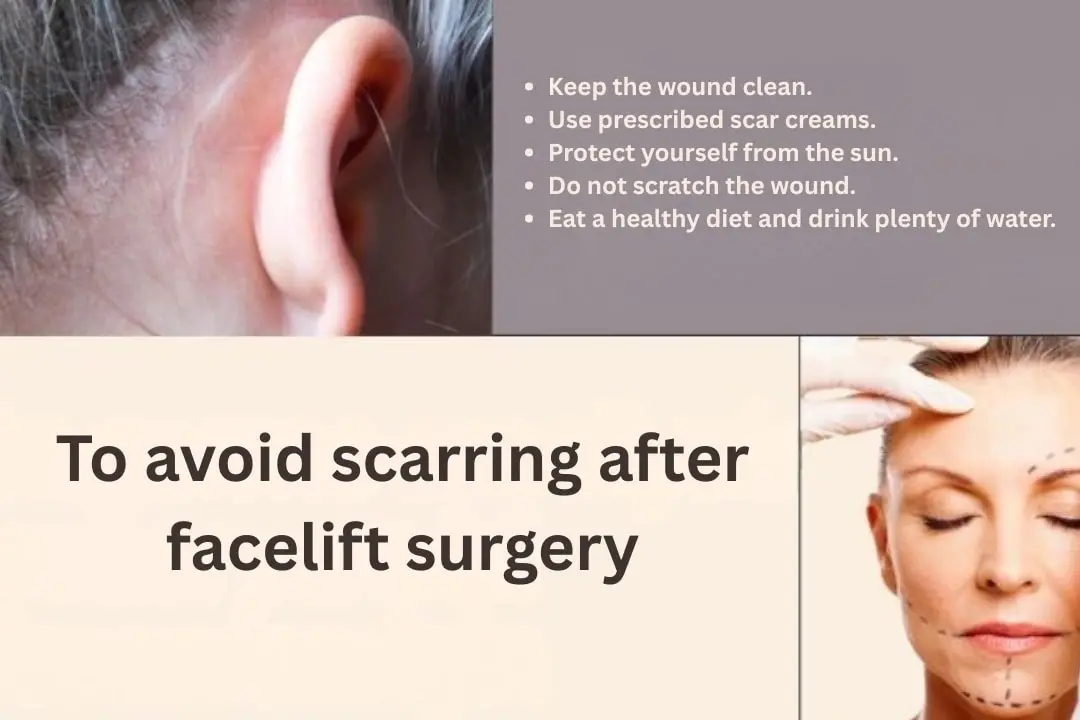Patients are curious about whether there will be a scar after facelift surgery. In addition to surgical techniques, postoperative wound care and taking skin protective measures are effective in minimizing facelift scars.

The scars that may occur after facelift surgery may vary for each individual. The shape and size of the scars that will occur after facelift surgery depend on several factors. It may vary depending on the type of facelift surgery performed, your skin structure and the experience of your surgeon.
In this article, Plastic Surgeon Op. Dr. Bülent Demir provides comprehensive information on facelift scars and how to minimize them.
What should be done to prevent scarring after facelift surgery?
We advise our patients to keep the incision areas clean and dry to prevent scarring after facelift surgery. You should not touch these areas as this may increase the risk of infection. Silicone-based scar gels help wounds heal more smoothly and prevent scars from becoming visible. Sunscreen with SPF 30 or higher should be used as exposure to the sun will darken scars.
Laser treatments also play an important role in improving the appearance of visible scars. Methods such as fractional laser stimulate the tissues under the skin, speeding up the skin's regeneration process and helping to make scars less noticeable.
Sleeping with your head elevated reduces swelling and helps to make scars less visible. If there is a crust on the scar, these should not be picked off as this can make the scars more visible. It is essential to follow your doctor's recommendations to achieve the results you desire and make the scar less noticeable.
Will there be any traces of aesthetic stitches?
Since your surgeon hides the incisions inside the hairline and behind the ears during facelift surgery, the scars are almost unnoticeable from the outside. Since these areas are covered by natural folds and remain within the hair, the scars disappear. Your stitches will initially be slightly swollen and pink. This is completely normal and there is no need to worry. Over time, this swelling will subside, the pink color will fade, and the scars will become almost invisible by blending with your skin tone.

If you follow your doctor's special recommendations after surgery and the general recommendations mentioned above, you can manage your wound better. You can make the aesthetic stitch scar less visible.
What should be done to avoid scarring after facelift surgery?
What should be done to avoid scarring after facial rejuvenation surgery and all surgical procedures:

- Keeping the wound clean: Prevents infection.
- Moisturizing: Prevents drying and crusting.
- Sun protection: Reduces hyperpigmentation.
- Not scratching: Prevents scar formation.
- Pressure bandage: Lightens the appearance of scars.
- Healthy diet: Supports skin renewal.
- Not smoking and drinking alcohol: Slows down healing and makes scars more visible.
- Having stitches removed on time: Stitches removed late can leave scars.
- Avoiding tight clothing: Tight clothing such as beanies and bandanas can increase friction and scar formation.
- Avoiding stress: Stress delays healing.
- Drinking enough water: Increases skin elasticity.
- Avoiding exercise: Can leave scars by putting pressure on the wound area.
When does the scar on the face disappear after facial rejuvenation surgery?
The swelling in the stitched areas after facelift surgery usually decreases within the first 2-3 weeks. During this period, the scars are noticeable. The scars, which are initially pink, begin to fade after 4-6 weeks and usually become almost invisible by blending with the skin tone within 3 months. Complete healing and the scars becoming invisible can take up to 12 months for most patients.
Inflammatory phase
During the first few days after surgery, swelling, redness and pain may be seen in the facial area. During this period, the body activates the necessary defense mechanisms for healing. Care should be taken to prevent the risk of infection. This process is the stage where the body takes the first steps to repair the damage in the wound area. This stage can last about 1 week.
Proliferative phase
The second stage covers the period when wound healing accelerates. The body produces new cells and scar tissue forms. During this period, you can feel the face starting to return to its natural appearance. Swelling and bruising slowly decrease, but since this healing process will take several weeks, it is necessary to be patient for it to be completed.
Maturation phase
This is the final stage of healing. New tissues strengthen and gain elasticity, but this process can take several months to a year. During this stage, facial features become more defined and the skin becomes smoother. Scars become less noticeable and the body takes its final steps for permanent healing.
Which cream is used to prevent scarring?
The most effective creams that have been scientifically proven to prevent scarring are generally silicone-based. Because silicone creates a protective barrier on the wound, traps moisture and thus balances collagen production. It also reduces redness and itching. In this way, scars heal more evenly and smoothly.
In addition to silicone-based creams, hyaluronic acid-containing creams also work to prevent scarring. They protect the skin's elasticity by keeping the skin moist and make the scars less noticeable. Creams containing vitamins C and E support collagen production and accelerate healing.
How do facial surgery scars go away? What removes surgical scars?
There are a number of medical applications that remove surgical scars on the face. Some of these are effective on new scars and some on older scars.
Silicone gel and plates for facial surgery scars
You can balance the moisture of your skin by using silicone-based products and ensure that the scars heal faster. If you use it regularly, it is possible to soften the scars and make them less visible.
Laser treatment to remove surgical scars
Laser beams target the collagen in the scar area, reducing swelling and darkening of the skin. This application is effective on more visible scars and in cases where the skin color is darker.
Stem cell treatment for facial scars
Stem cells reduce facelift surgery scars by renewing the skin. This method is effective on both new and old scars and gives the skin a smoother appearance.
LPRP treatment after facelift
Plasma obtained from the person's own blood accelerates skin regeneration and makes the scars paler. It is especially effective on new scars.
Steroid injections for scars
Corticosteroids suppress collagen production in raised, red scars, flattening and lightening them.
Chemical peels and microdermabrasion for facial scars
Exfoliates the upper layer of the skin, removing dead cells and lightening scars. In other words, this method renews your skin and makes it smoother.
Choose the right surgeon and achieve satisfactory results
Although facelift surgery is generally a safe procedure, there may be some complications that may occur, albeit low. Being aware of these potential risks allows you to take proactive measures and intervene in a timely manner when necessary.
It is very important to choose the right plastic surgeon to reduce the risks of complications such as infection, bleeding and nerve damage and to get the best results. Working with an experienced and expert surgeon makes the healing process smooth and leads to satisfactory results.
Dr.Bülent Demir aesthetic clinic in Antalya, Turkey is dedicated to achieving your goals to achieve natural-looking and satisfying results.
If you would like more information about facelift surgery, you can contact us or call us for a consultation appointment. Our goal is to provide the best results for you and guarantee your satisfaction
